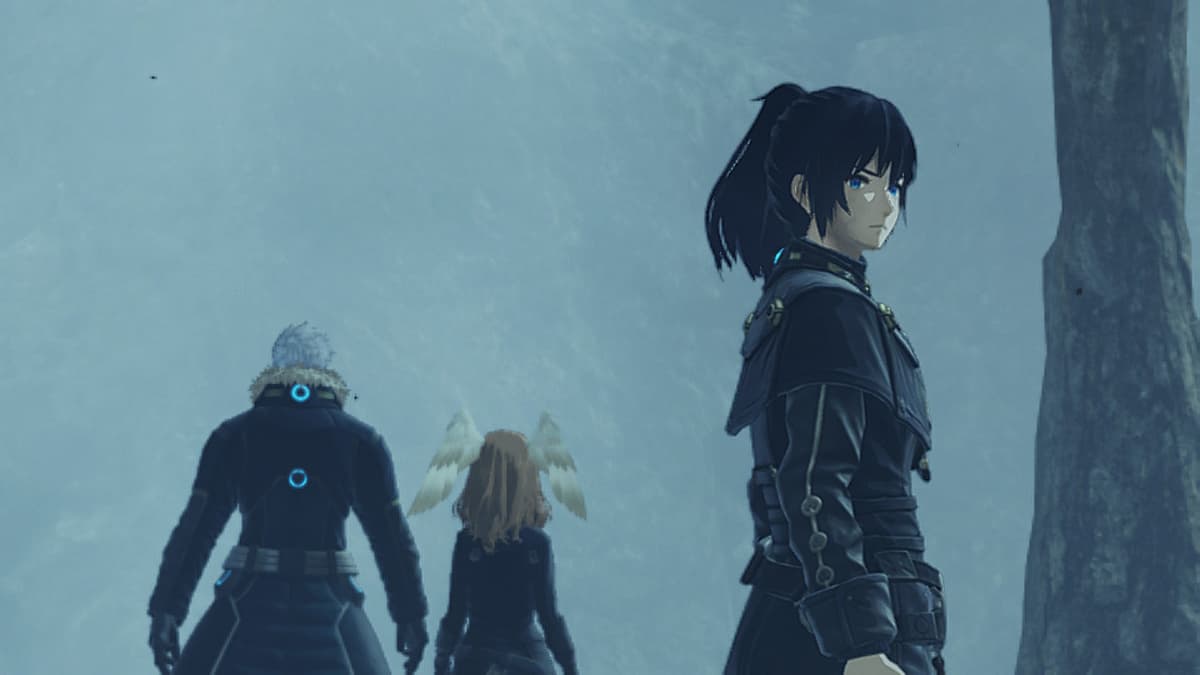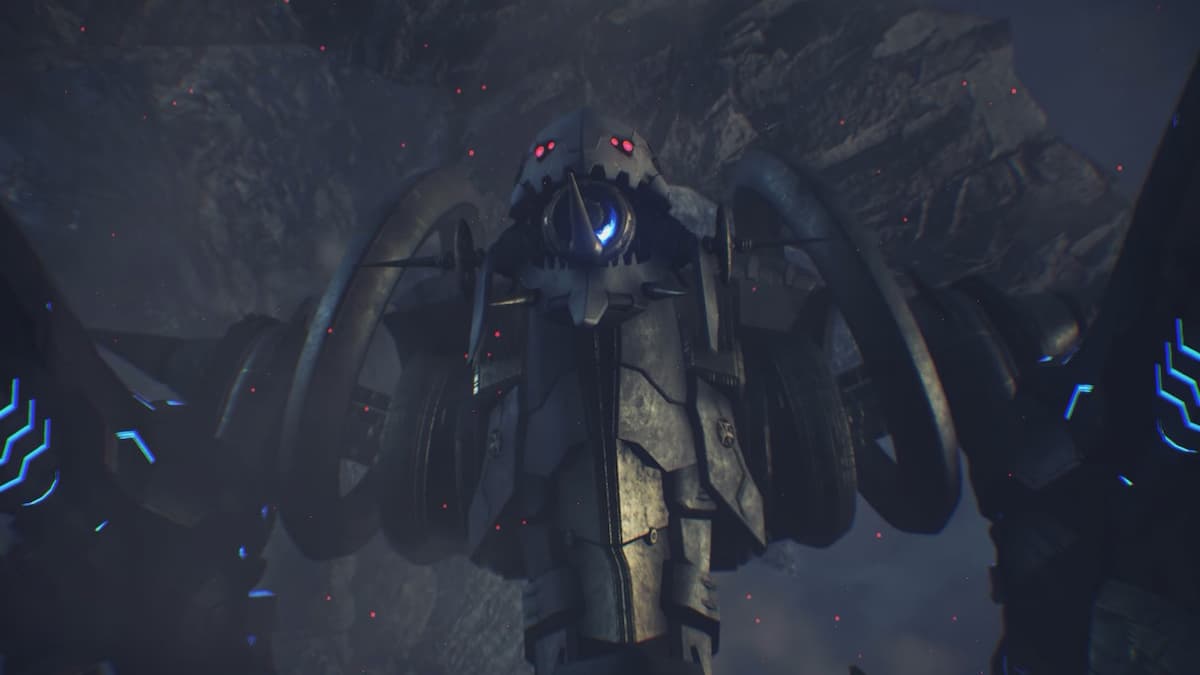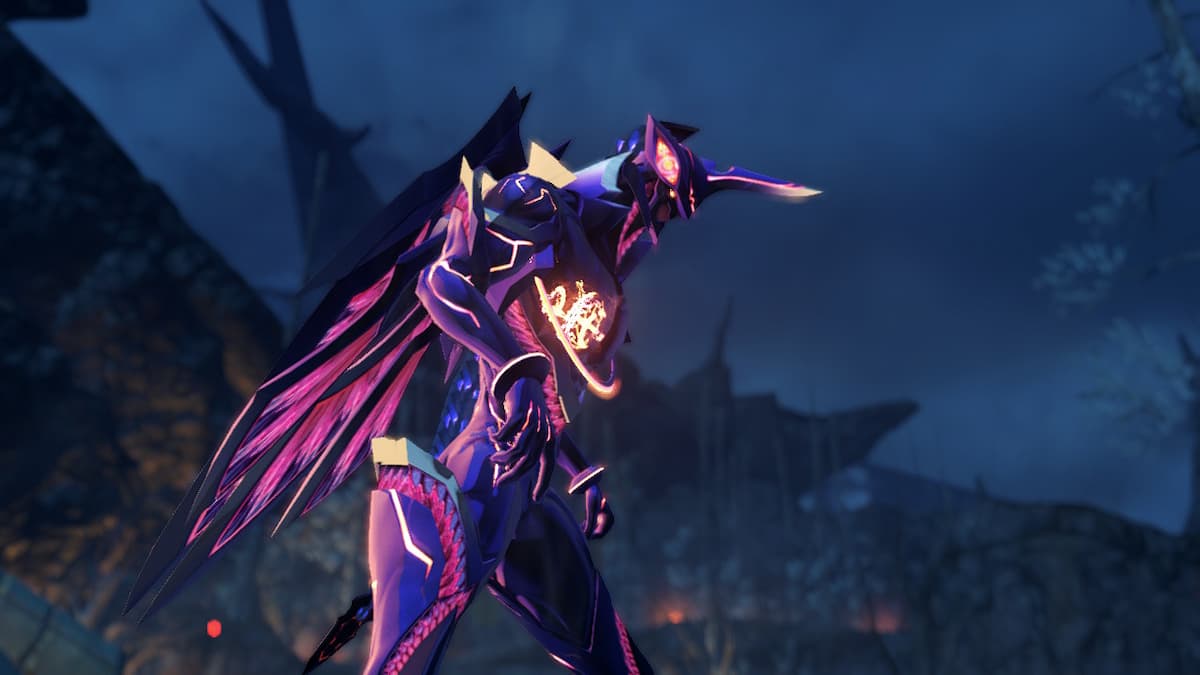Xenoblade Chronicles 3 on Switch
Whenever a new Xenoblade Chronicles game is announced there’s a mad dash online for fans to absorb as much information about the game as possible. This devoted fanbase the franchise has cultivated over the last decade only continues to grow with each successive fantastic game Monolith Soft puts out. Fortunately for fans, it looks like they might have another hit on their hands with Xenoblade Chronicles 3.
In Xenoblade Chronicles 3 we see three soldiers of Keves (Noah, Eunie, Lanz) join up with three soldiers from the rival nation of Agnus (Mio, Sena, Taion). Following their newfound freedom from their shackle-like Flame Clocks, they seek to free others from the cycle of violence.
The existence of every colony is inexorably tied to its Flame Clocks. These massive clocks are displayed on each colony’s giant mech known as a Ferronis. Additionally, the Flame Clock can be seen in a single eye of each colony member. Failing to keep a Flame Clock above empty spells certain death for a colony which in turn is the catalyst for the forever wars that Noah and his friends are trying to end.

With the use of Noah’s blade, Lucky Seven, he’s able to destroy the Flame Clocks of the colonies he and his friends come across. This effectively frees everyone in the colony from the need to kill in order to remain alive.
However, it’s not all fun and games once this band of unlikely friends gets started. Noah and the gang are quickly dubbed Ouroboros by the powers that be and become the number one target of both Agnus and Keves since The Queen and her Consuls need the energy of the Flame Clocks to live. They use this endless cycle of death as a way to continue holding power over the colonies.
It’s a relatively dark story when compared to past Xenoblade games, though there are certainly bright spots of hopefulness here and there when you finally free a colony. Still, the small colonies seemingly barely scrape by day to day with meager rations and some not even having proper kitchens.
If that’s not grim enough, then there’s a game mechanic where Noah and Mio play a song to send off the spirits of the soldier husks (corpses) you find throughout the world of Aionios. It’s a nice gesture and increases colony affinity. Yet, it’s a somber reminder of the conflict that plagues even the most beautiful areas of their world.

Overall, the writing can be a bit goofy at times like most Xenoblade games, but there’s undoubtedly a more serious tone throughout. Even the tiny adorable mascots of the franchise that are frequently the comic relief (Nopons) are given some of the more poignant lines of wisdom and introspection. However, it’s still relatively difficult to take them seriously with their bizarre syntax where they frequently talk in the third-person, drop verbs of being, and use -pon as a suffix randomly.
As for the rest of the English voice acting, it’s actually quite good. At no point was there ever a reason to want to switch to Japanese. However, like in past Xenoblade titles, there are those lines you hear over and over again which will undoubtedly become memes.
For example, Lanz repeatedly calls rare items you pick up rare doodads. It’s kind of silly and entertaining the first few times but it quickly becomes obnoxious the next hundred times you hear it over the following 60+ hours. That’s hardly the only annoyingly repetitive line in Xenoblade Chronicles 3. Still, the all-around quality of the voice acting is a net positive for the game.
Another carry-over from past Xenoblade Chronicles games is the title feeling like it’s being held back by the hardware. The character, environment, and enemy designs in Xenoblade Chronicles are all spectacular. Despite the not-so-good-looking tricks like drastically cutting down enemy framerate at a distance and noticeably short draw distance, it at least helps keep the game at a manageable resolution (1280×720) and floating around the 30 FPS mark.

Unfortunately, this game still suffers in handheld mode, albeit less than the vaseline-smeared Xenoblade Chronicles 2 did. Now don’t get me wrong, Xenoblade Chronicles 3 is the best-looking and smoothest-running game in the franchise. Yet, it just feels a bit cramped on such a small screen. It’s important to note that this is based on my experience playing on a standard Switch screen. It’s certainly possible that the extra real estate of the OLED model could alleviate this feeling.
In spite of the visual shortcomings here and there with Xenoblade Chronicles games, the gameplay is always fantastic. The biggest improvement this time around is in the attack canceling system introduced in the previous title. Basically, your special attacks (Arts) can be used to cancel auto-attacks or other Arts.
Additionally, some Arts will get a considerable damage boost if they’re used to cancel another attack. On top of that, players can even cancel the extremely powerful Ouroboros Arts that can be used when in Ouroboros Form.
These Ouroboros Forms are activated via the Interlinking mechanic that allows you to fuse two party members together. This is the biggest new system in the game’s combat that can turn the tide of a battle against legendary enemies and bosses. These new forms look like sleek purple and pink mechs — think Evangelion — that can deal out absolutely ridiculous amounts of damage, sometimes in excess of one million damage in a single Chain Attack.
Along with this immense power comes sizable limitations as well. It’s impossible to Interlink in quick succession since there’s a considerable cooldown period. This helps balance out what could be an overpowered option in battle. Plus, the best way to get the most out of an Interlink is to wait anyway.
